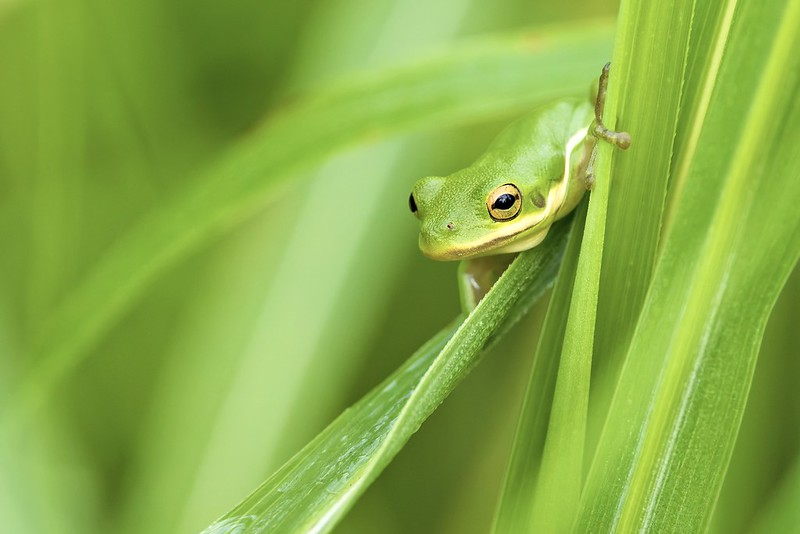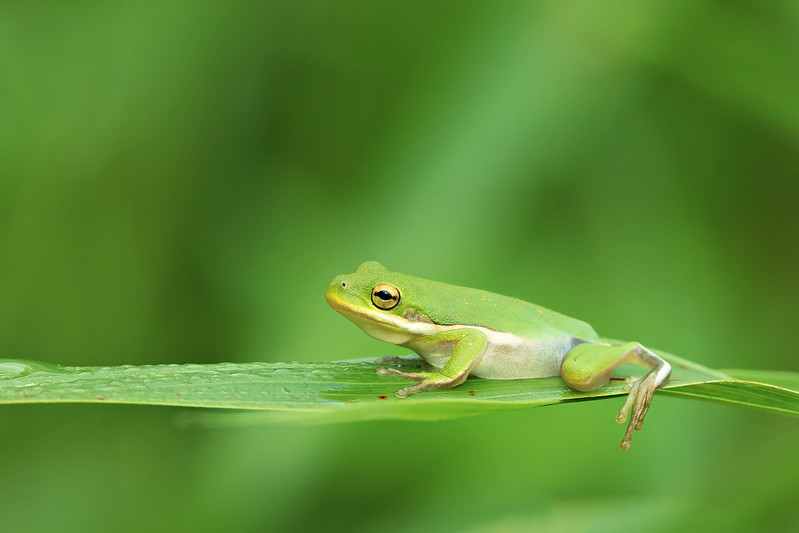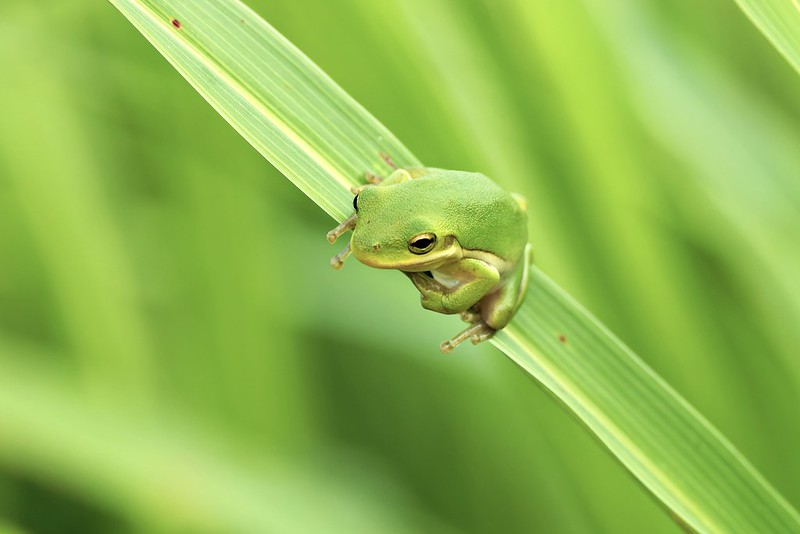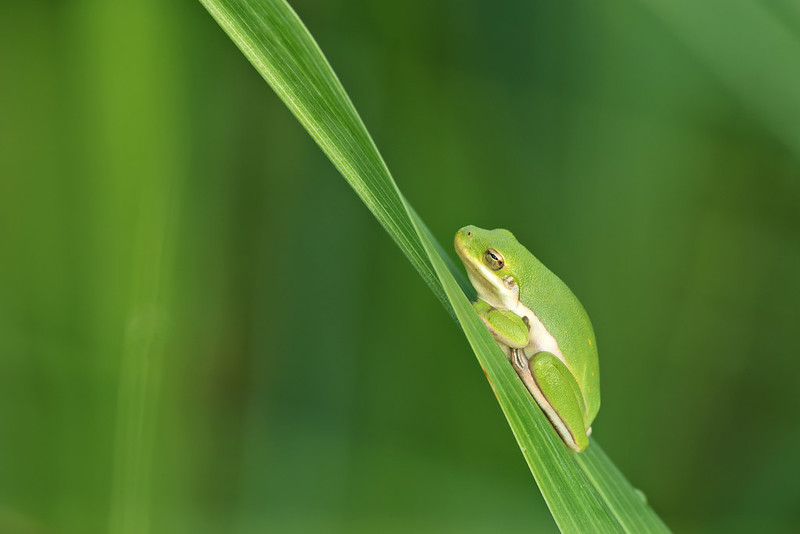The American Green Tree Frog (Hyla cinerea) is a small, smooth-skinned amphibian that thrives in wetland areas across the southeastern United States. At the Sequoyah National Wildlife Refuge in Oklahoma, these frogs are a seasonal highlight during the warm months of July and August.
Their bright green coloring may seem like it would make them easy to find. However, in their grassy habitat, this vivid shade blends perfectly, turning the frog into a master of camouflage. They rely on both their coloration and their ability to remain still for long periods to stay hidden from predators.

A Challenging Summer for Frog Spotting
In previous years, I have reliably found American Green Tree Frogs in two specific locations within the refuge. This summer has been different. The frogs may still be there, but spotting them has proven much harder. Their ability to vanish into the reeds and leaves is remarkable.
Fortunately, I discovered a third location where a few frogs were visible. Each sighting felt like a small victory, especially when I could capture them in photographs. Their delicate pose on grass blades and their curious, watchful eyes make them an irresistible subject for nature photography.

Camouflage and Patience in Wildlife Photography
Photographing American Green Tree Frogs takes patience, a keen eye, and sometimes a bit of luck. The Sequoyah National Wildlife Refuge provides a rich, natural setting for these frogs, but their secretive nature means you often have to slow down and scan carefully.
When I do spot one, I take the time to appreciate not just the photo opportunity but the clever survival strategy at work. Each frog blends seamlessly into the greens of the wetland, a perfect example of nature’s quiet genius.


If you’d like to see more of my American Green Tree Frog images from over the years, you can visit my photo archive here: American Green Tree Frog Collection.
Takeaway: The American Green Tree Frog is a reminder that sometimes nature’s most beautiful subjects are also the hardest to find. With patience and careful observation, you can discover their quiet presence in the lush green world they call home.
